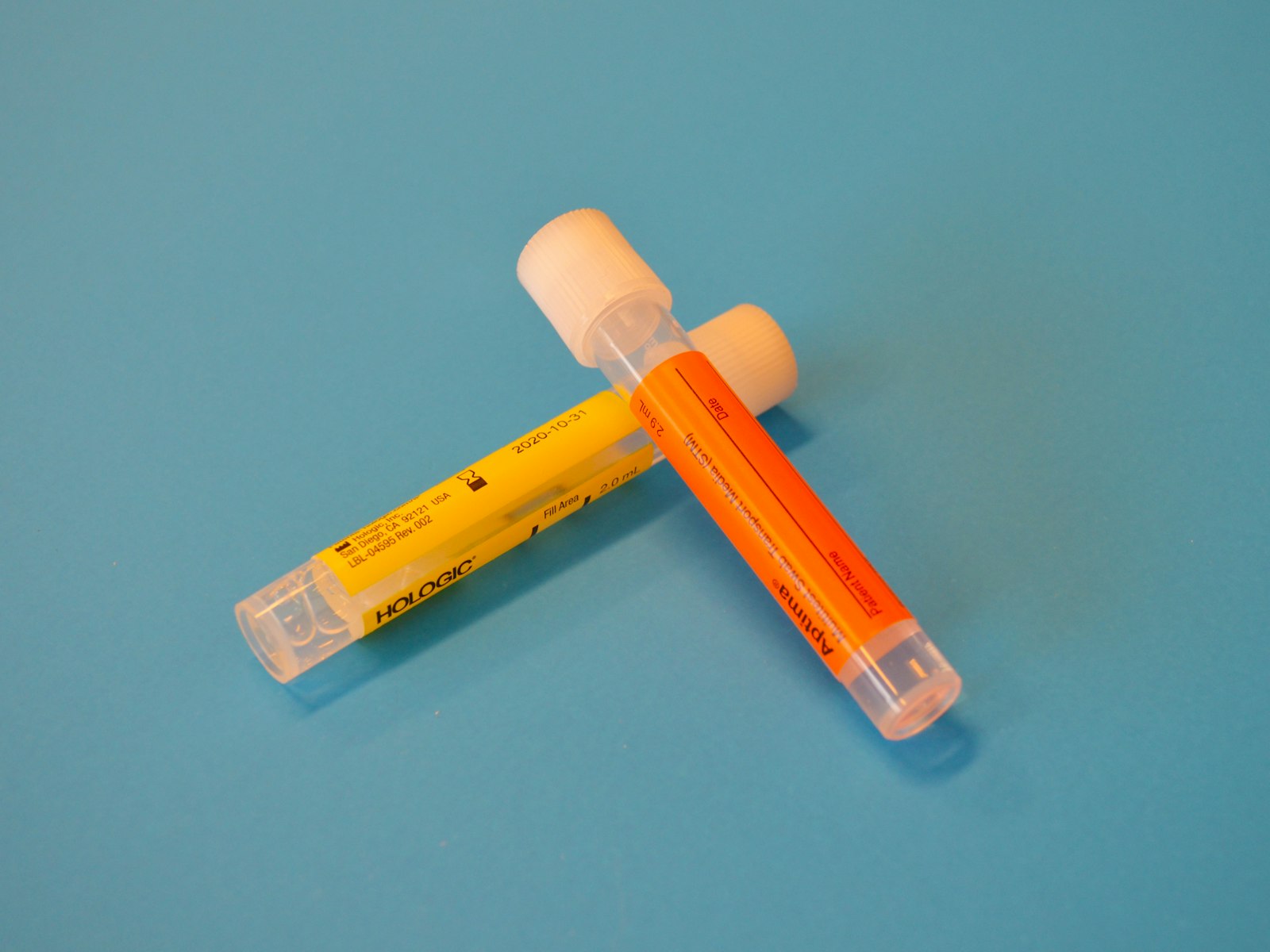Marketers live and die by metrics, and we have an insatiable need to optimize every touchpoint of the customer journey. But in a sea of data and endless possible variations, how do you actually isolate the changes that have a real impact on conversions and acceleration through your funnel? That's where the more nuanced side of A/B testing comes into play.
Seasoned marketers know A/B testing isn't just about which button color gets more clicks. It's about understanding why certain elements resonate with specific customer segments and aligning those insights to accelerate qualified leads down the funnel.
Let's break down some of the ways you can benefit from more precise A/B testing for a deeper understanding of high-intent customers and achieve real, impactful funnel acceleration.
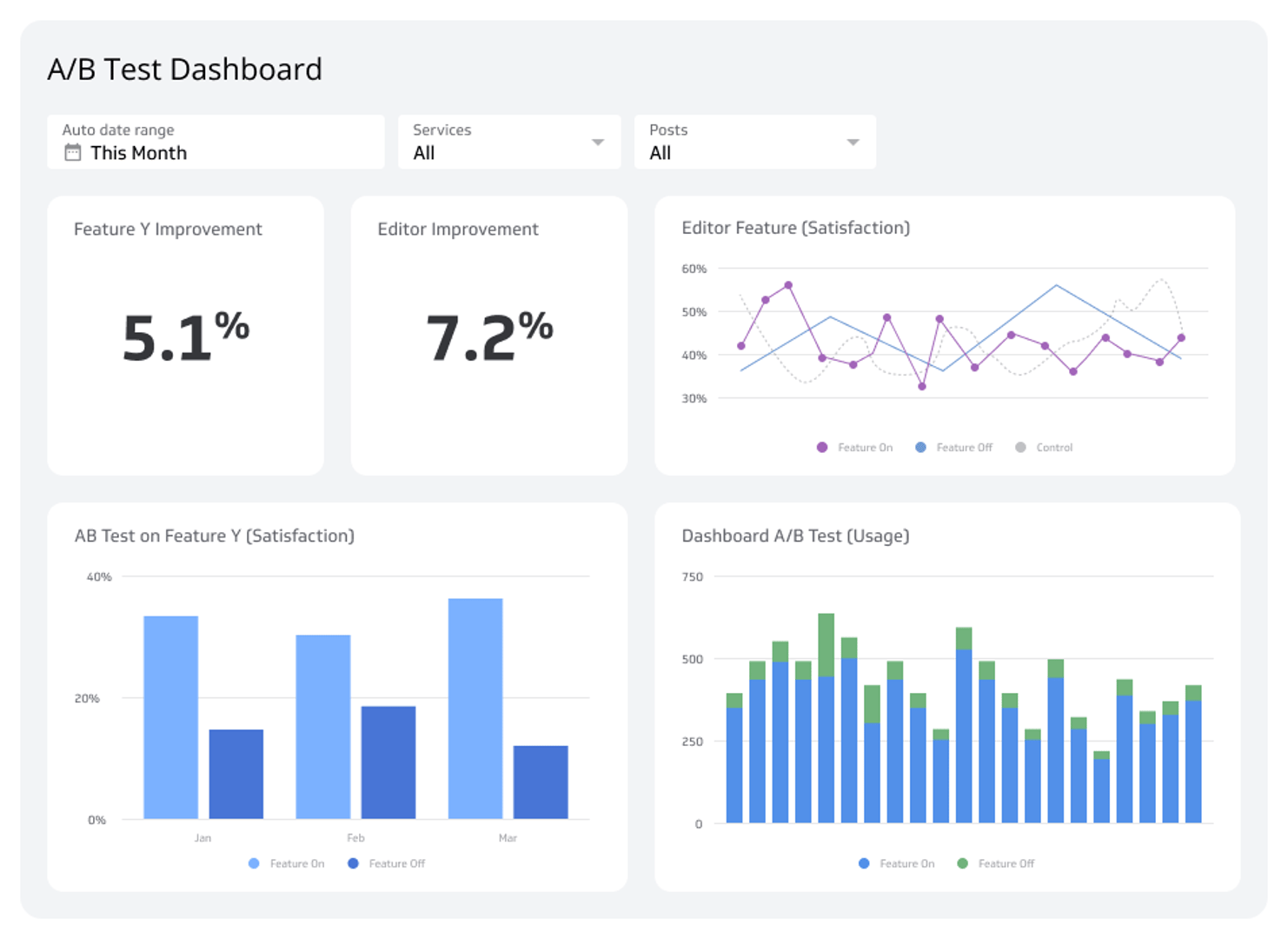
Beyond Button Colors: What to Test
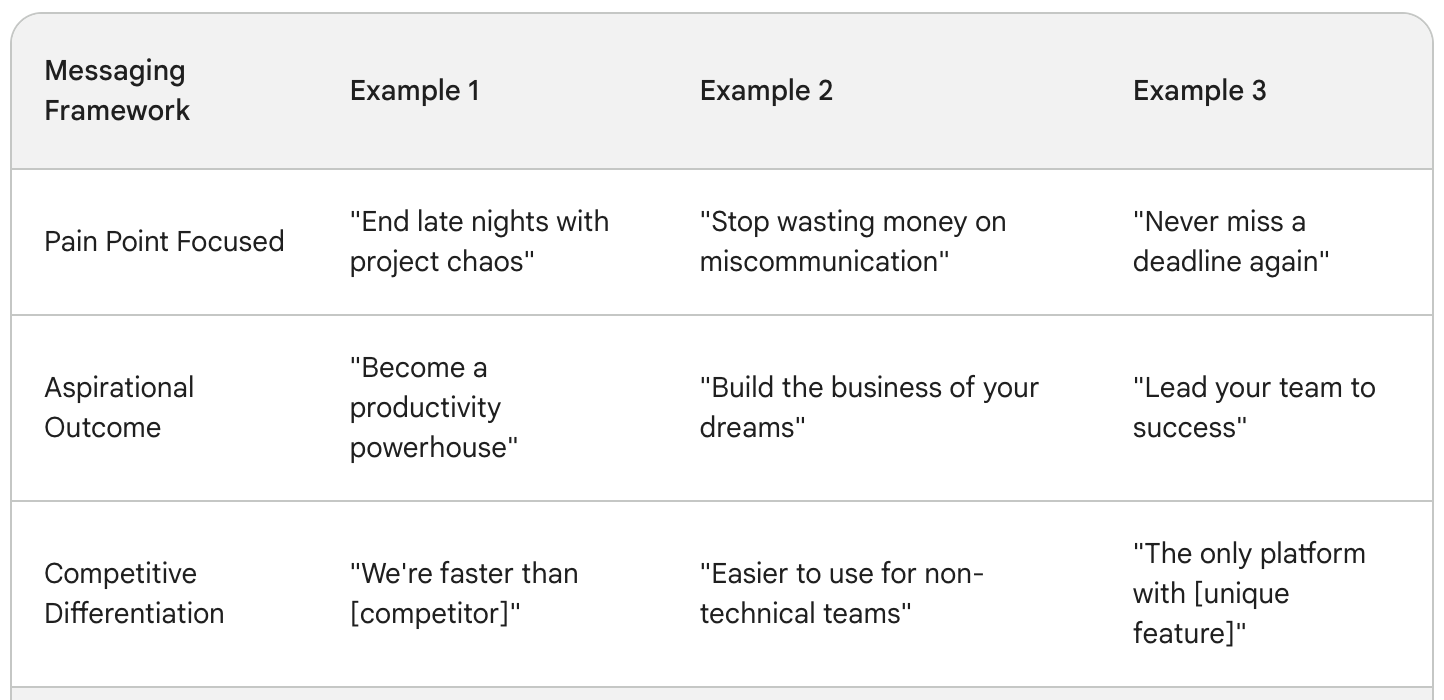
A fundamental mistake in A/B testing is focusing on surface-level elements without a strategic goal. Here's where the nuance comes in:
Messaging Frameworks
A/B test variations that fundamentally change how you frame your value proposition. Are you emphasizing pain point solutions, aspirational outcomes, cost-savings, or competitive differentiation? This goes beyond individual words – it's about the overall narrative.
Offer Structures
Test different offers for the same product or service. For example, a free trial vs. a discount, a feature-limited free plan vs. a “money-back guarantee” trial. These reveal what incentives truly motivate your target segments.
Social Proof
Experiment with different types of social proof – testimonials, case studies, number of users, reviews. Understanding what builds trust for your audience is key.
Channel-Specific Element
If you're testing on a high-engagement channel like email, try subject line variations, preview text, and even send times. These have massive conversion rate impacts that tie back to user intent.
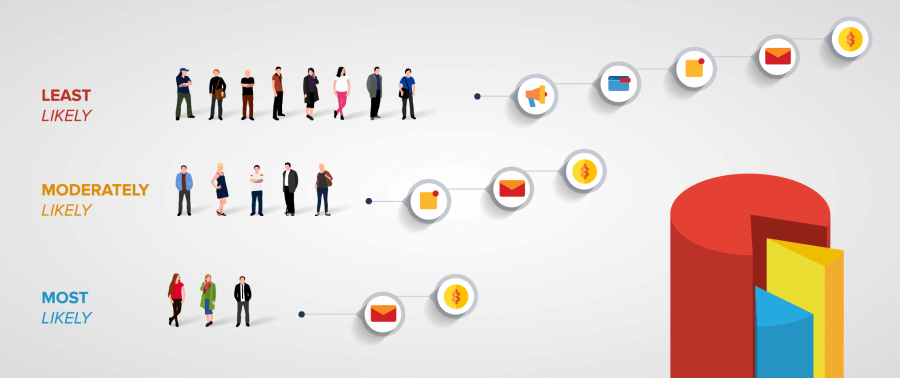
Understanding Intent Segmentation
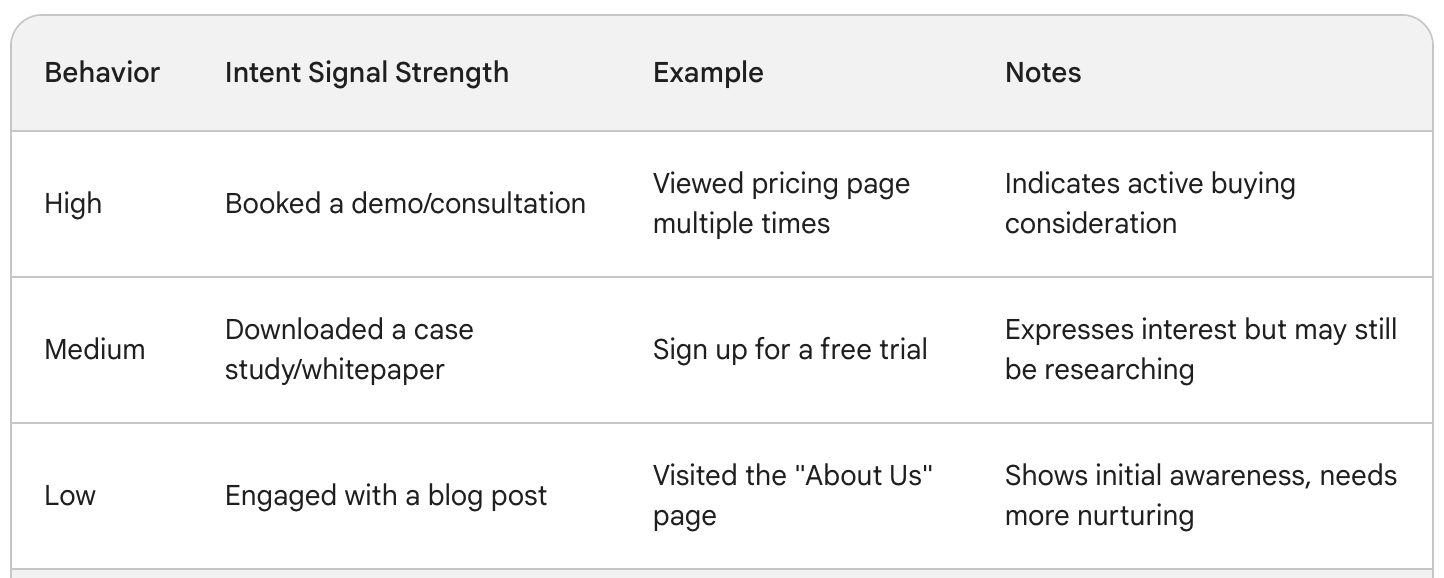
Generic A/B testing casts too wide a net. To find high-intent customers, segmentation needs to be baked into your testing strategy.
Past Behavior
Segment your audience based on website interactions, email engagement, past purchases, or support ticket history. Test variations specifically tailored to these behavior patterns to see what drives action.
Firmographic Data
A classic B2B tactic. Test based on company size, industry, job titles, etc., to reveal any strong correlation between company profiles and messaging/offer resonance.
Traffic Source
Did a user arrive via a Google search, a social media ad, or a backlink? Test variations based on these sources to understand how intent and messaging expectations might change.
Example: The Power of Intent-Based Segmentation
Let's say you're a SaaS company offering project management software. Here's a segmented A/B testing scenario.
Audience Segment: Users who've signed up for a free plan and have been actively using the product for at least 2 weeks (behavioral segmentation)
Test Variation A: Email promoting an upgrade with a focus on advanced collaboration features.
Test Variation B: Email promoting an upgrade with a focus on time-saving and productivity benefits.
By analyzing which version drives more conversions within this high-engagement segment, you gain specific insights about the value proposition that triggers purchase intent.

Aligning Testing with Funnel Stages
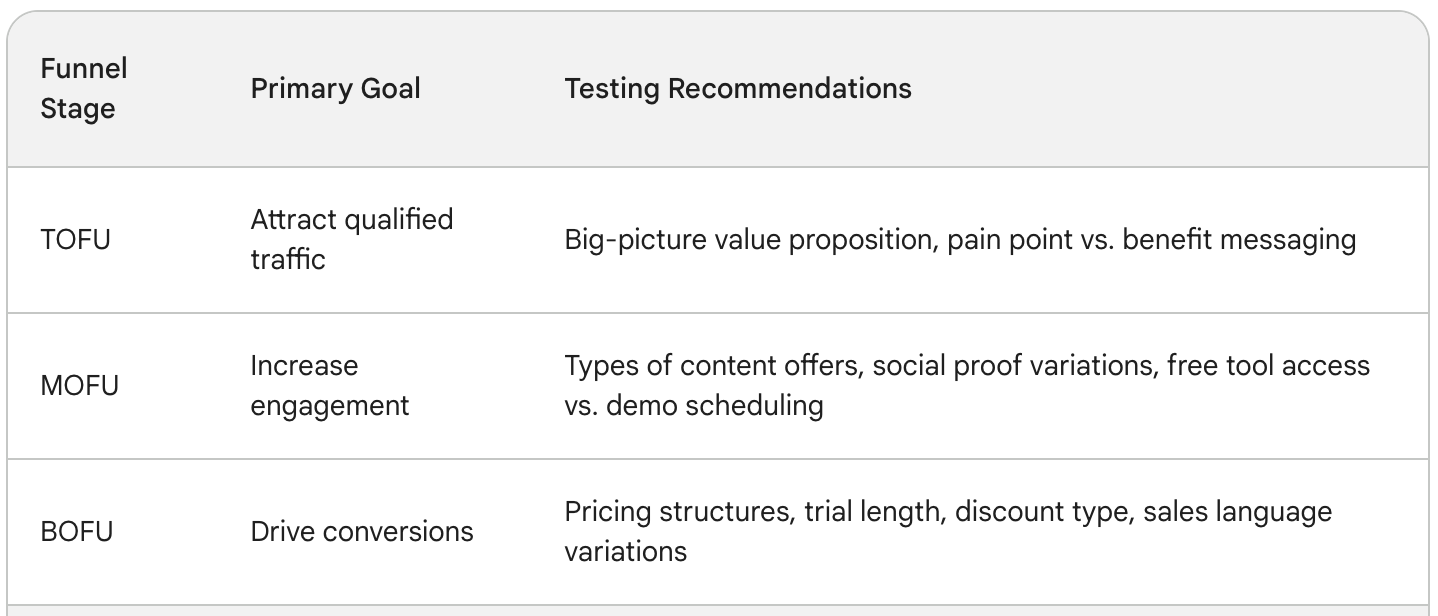
The “funnel” isn't a monolith. Your A/B testing approach needs to change based on where a prospect is in their journey:
Top-of-Funnel (TOFU): Focus on high-level messaging resonance. Test big-picture value propositions, pain point vs. benefits framing. The goal is to maximize qualified traffic entering your funnel.
Middle-of-Funnel (MOFU): This is where you test how to deepen engagement. Focus on social proof variations, content offers (eBooks, webinars), or “light” commitment CTAs (book a demo, free consultation).
Bottom-of-Funnel (BOFU): Fine-tune offer and conversion optimization. This is where you test trial lengths, discounts, pricing page layouts, guarantee language – elements that directly impact purchase decisions.
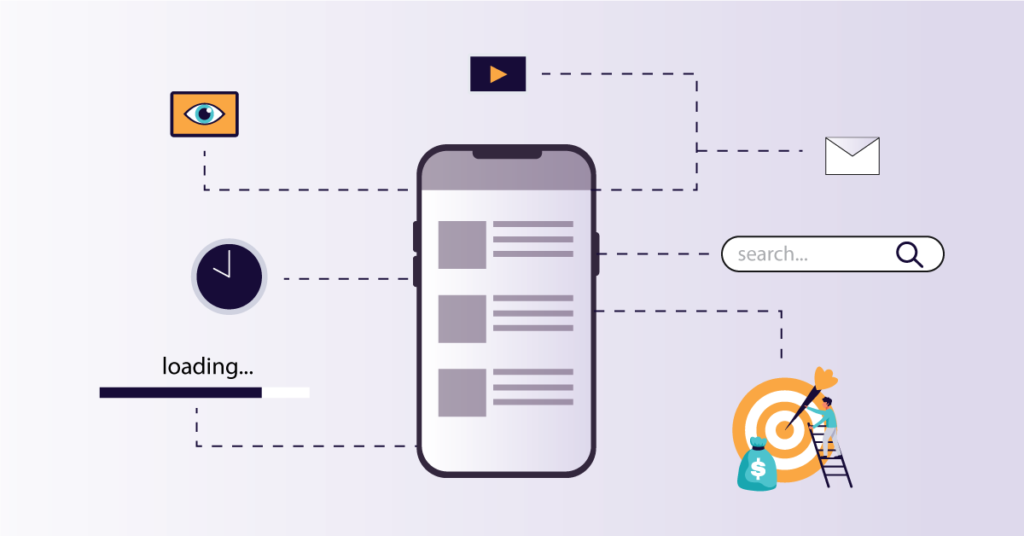
Turning Insights into Action
Gathering data is one thing, but turning those findings into actionable steps is where the real value of A/B testing lies. Here's how to optimize your funnel acceleration process:
Iterate, Don't Fixate
Don't overreact to the results of a single test. A/B testing is an ongoing process. Build insights over time, and refine your approach.
Winning Variations Aren't Forever
Market trends and customer expectations shift. What worked last quarter might not work now. Regularly revisit even those elements that were strong performers previously.
Align with Sales
Your high-intent leads are the fuel for your sales team. Share A/B testing insights into messaging and offers with your sales reps so they can tailor their conversations for maximum conversion potential.
A/B Test to Funnel Acceleration
Let's return to our project management SaaS example. You discover that your active free plan users respond more favorably to the “time-saving and productivity benefits” messaging. Here's how to translate that into action.
Revise your website's hero section and key marketing pages to emphasize these benefits, using language that mirrors your winning test variation.
Update existing blog posts and resources to align with this value proposition. Create new content that directly addresses time-saving tips and productivity hacks using your software.
Design retargeting ads tailored to users who've shown interest in time-saving aspects of your product, reinforcing the messaging.
The Upwork Experiment
To illustrate this in action, let's look at Upwork, the freelancing marketplace. They ran a now-famous A/B test on their primary landing page CTA:
- Original CTA: “Find Freelancers”
- Variation CTA: “Hire Freelancers”
The “Hire Freelancers” version saw a 24% lift in conversions. This seemingly minor change fundamentally shifted the site's value proposition and attracted a higher-intent user ready to take action.
A/B testing isn't a magic bullet, but it's a critical tool in any data-driven marketer's arsenal. By going beyond superficial tests and approaching it with strategy and segmentation, you can unlock insights that translate into qualified leads, faster funnel movement, and increased revenue.
Remember, the best A/B tests aren't born from guesswork - they're inspired by understanding your audience and aligning messaging to their deepest pain points and motivations.
FAQ
1. My A/B tests never seem to produce clear winners. What am I doing wrong?
There are a few common culprits:
- Not enough traffic: Statistical significance depends on sample size. If you're not getting enough visitors to each variation, even big differences in results could be due to chance. Use a sample size calculator before launching tests.
- Changing too many things: If you change the headline, image, and CTA all at once, you won't know which element actually caused a change. Isolate variables as much as possible for more actionable data.
- Focusing on the wrong metrics: Click-through-rate is helpful, but not the end-goal. Make sure you're tracking the metrics that align with your test goal (demo bookings, free-to-paid upgrades, etc.).
2. How do I go beyond testing button colors and basic copy changes?
Think about the fundamental messaging frameworks you use to describe your product. Do you emphasize solving pain points, aspirational outcomes, cost-savings, or competitive advantages? Testing drastically different ways of framing your value proposition can have a much bigger impact than minor word tweaks.
3. Should I be testing different things for existing customers vs. new prospects?
Absolutely! Existing customers already have some familiarity with your product. Focus testing on upsell opportunities, feature adoption prompts, or messaging that deepens their engagement. For new prospects, testing should primarily target capturing their initial interest and addressing top-level objections.
4. Isn't A/B testing mostly just for websites and landing pages?
While it's common in those areas, A/B testing has broader applications. Consider:
- Email Marketing: Test subject line variations, personalization effectiveness, or send times to optimize open rates and click-throughs.
- Ad Campaigns: Test different imagery, headlines, and targeting criteria to maximize your ad spend.
- In-App Messaging: Experiment with onboarding flow variations, feature promotion pop-ups, or pricing offer displays within your product itself.
5. How do I know which audience segments to focus my testing on?
Analyze your existing data for clues:
- Behavioral patterns: Look for behaviors that correlate with higher conversion rates. Have those who sign up for webinars converted at higher rates in the past? Segment based on webinar attendance.
- Traffic source: Did visitors from a particular industry blog show more interest than those from a generic business forum? Segment and tailor messaging accordingly.
- Firmographics (for B2B): Are enterprise leads responding differently than SMBs? Job titles? Create segments based on these factors.
6. How often should I be running A/B tests?
A/B testing should be an ongoing process, not a one-off task. Set a realistic cadence based on your traffic volume and resources. Even one well-designed test per month will generate valuable insights over time.
7. My winning A/B test variations don't seem as effective after a few months. Why?
Market trends, competitor activity, and even seasonal factors influence customer behavior. Don't assume your past winners will always be winners! Revisit successful tests periodically to ensure they're still outperforming the original.
8. What's the best way to share A/B testing results with my sales team?
Focus on the "why" behind the winning variations, not just the results. Explain the messaging or offers that resonate best with high-intent leads. Help your sales team tailor their conversations to align with the insights you uncover.
9. What are common A/B testing tools I should consider?
The right tool depends on your needs and technical setup. Popular options include:
- Optimizely: Robust platform for both web and app testing
- Google Optimize: Free option with seamless Google Analytics integration
- VWO: Offers features like heatmaps and behavior-based targeting
- AB Tasty: Strong focus on personalization options
10. I'm still feeling overwhelmed. Where can I learn more about advanced A/B testing?
There are great resources available:
- Blogs: Blogs by companies like Optimizely and VWO offer in-depth tutorials and real-life case studies.
- Online Courses: Platforms like Udemy or Coursera have dedicated courses on A/B testing.
- Webinars: Many testing software companies host free webinars showcasing advanced tactics.


